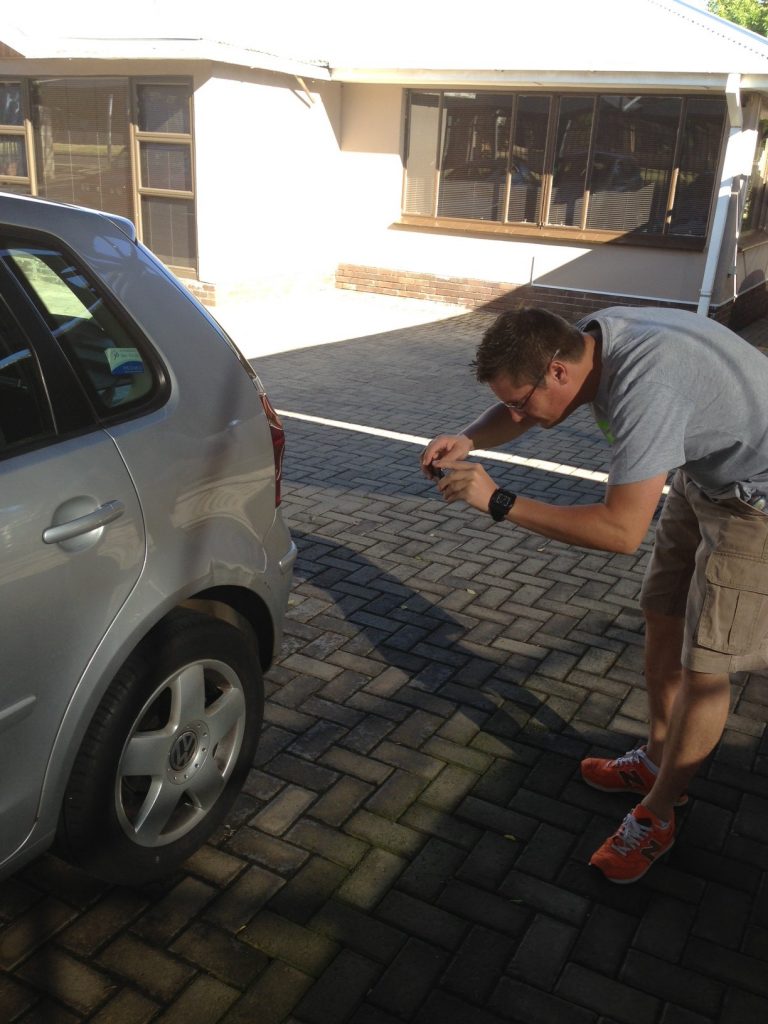It’s a sad truth, many motorists have been involved in a minor accident at some point in their lives. These accidents tend to occur under unsuitable driving conditions, such as during rain and reduced visibility.
Even though these accidents are rarely fatal, it’s important to follow the correct procedures if you ever have this type of accident.1,2
Is Everyone Okay?
Priority is to make sure no one is hurt, but if so, immediately alert the emergency services. 1
Hit and Run Is Illegal
Advocate Jackie Nagtegaal, representing ‘Law for All,’ states that South African law requires you to stop your vehicle after hitting a car, person, or animal. If you commit the offence of hit and run, you could expect a fine of R180,000, up to 9 years in jail or both. 1
What Charges or Claims Could Come Your Way?
Some criminal charges against you could include culpable homicide, negligent driving, and reckless driving, whilst civil claims against you could involve personal injury or damages. 1
When No One Is Hurt, and Car Damage Is Minor
When all parties concerned have agreed that damage is minor, and that there are no injuries, drivers can move their cars. But before doing so, clearly mark the cars’ positions on the road with chalk or white paint. Use your cell phone to take as many pictures as of the scene and the damaged cars as possible.1
Report Within the Next 24 Hours
Remember that an SAPS officer will only come to an accident if there have been injuries. If none, you need to report the accident to the nearest SAPS station within 24 hours. Not only are you fulfilling a legal requirement, but your car insurer also needs an SAPS accident case number. 1
Can You Claim Damages?
Yes, you could claim car damages against the other party if they caused the accident. The only challenge may be if they have no car insurance. This is a major problem in South Africa, because approximately only 30% of 12 million drivers have car insurance. 1,2
Follow a Check List at the Accident Scene
Record full names and ID numbers of the other driver. Record full names and ID numbers of any witnesses. It’s a good idea to write down their phone numbers, email addresses and residential addresses. Take pictures of the damage incurred to your vehicle and the other party’s car. Also take a video and/or pictures of the scene. Describe in detail the colour, make, model and registration number of both cars involved. Take details from police, medics or tow truck drivers arriving on the scene. 1
If the Third Party Offers To Pay for Damages
If you depend on good faith for the third party to pay for damage incurred to your car, it’s best to get three quotes. Maintain a thorough paper trail of all correspondence in case you need it later as evidence. According to ‘Law for All’, you may serve the third party with a Letter of Demand if they refuse to pay. 1
Disclaimer
This article shows motorists what to do in a minor car accident. 1,2
If you were to have a minor car accident, would you have peace of mind that you have adequate cover? If not, contact us at PMD for more information. We’ll use our world-class client service to show you all about our affordable car insurance products with unique benefits, such as fixed premiums* and a reduce-to-zero excess*. T’s and C’s apply.
If you wish to buy a suitable financial services product, consult a financial advisor for professional advice.
Sources:
This article was prepared by Eric Sandmann in his personal capacity. The views and opinions expressed in this article are the author’s own. The views and opinions in the article should not be attributed to anyone but the author unless expressly stated. Nothing in this article should be relied upon as advice, this publication is presented for informational purposes only. No person should act or refrain from acting in reliance on any information found in this article, without first obtaining proper financial advice from the appropriate professional. The author makes no claims, promises or guarantees about the accuracy, or completeness, of any information linked from, referred to, or contained in this article. The author reserves the right, to edit and change the content of this article.
